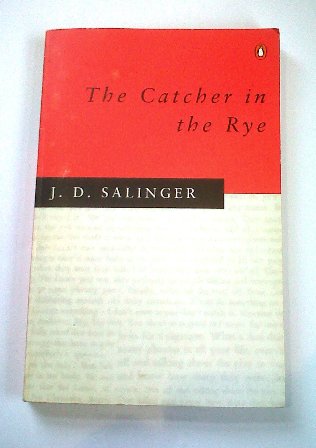
No 13: The Catcher in the Rye by J D Salinger
What’s it about?
The Catcher in the Rye tells the story of Holden Caulfield, a 17-year-old rich kid, as he descends through alienation into depression against the backdrop of a 1950s New York Christmas. As the novel starts Caulfield is in the final few days at his exclusive private school, Pencey Prep, from which he is to be excluded, having failed almost all of his subjects and proved a generally difficult student. Following a fight with his roommate, Caulfield decides to leave the school late on Saturday night and the book follows his misadventures over the following 36 hours, which culminate in a physical breakdown to match his mental disintegration.
What’s it got to do with leisure?
As a member of the privileged elite, Caulfield’s life is steeped in sport and key allusions are made using sporting images. On the day the book starts Caulfield is in disgrace, having left the school fencing team’s equipment on the subway en route to a fixture. The team’s ostracising of him is symptomatic of his increasing isolation in general. This alienation is underlined when we see him on a hill overlooking a football game from which he has chosen to absent himself despite it being attended “by pretty much everyone else”. As he packs he is forced to confront the emotional distance between himself and his mother who recently bought him some skates: “She bought me the wrong kind of skates – I wanted racing skates and she bought me hockey – but it made me sad anyway.”
Later in the narrative allusions to competitive golf, basketball and polo are replaced by images of mass leisure pursuits such as concerts, night clubs and a Christmas skating rink. At the denouement Caulfield’s final unravelling takes place against the backdrop of a museum and the city zoo.
Why should I read it?
Salinger’s choice of metaphorical landscape shines a dazzling light on the pointlessness of sport and the emptiness of idle leisure, thus inviting the sport, leisure and culture professional to question their own existence, as Caulfield questions his. Held to be one of the best books ever written about teenage angst, it is far more than an adolescent boy’s guide to ennui. Whether it would enlighten the politicians trying to come to grips with the violent social protest – some say mindless rioting – which affected England this August is moot but the insight it offers into the mental torment of a disaffected young man is uncannily accurate.
With over 250,000 copies sold each year the novel divides America, being at times both the most censored book in school libraries and the second most taught book in school classrooms. It is acknowledged to be one of the best novels of the 20th century, offering a snapshot of New York mores in the 1950s, an investigation of mental breakdown and a study in teenage alienation.
the leisure manager’s library
An occasional series offering a guide to leisure-related literature
